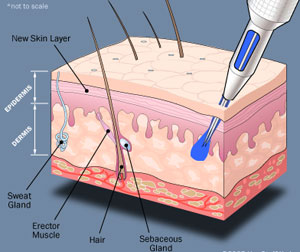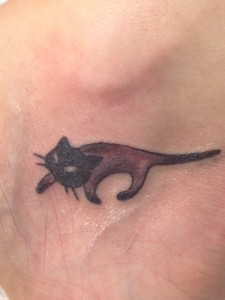It took me a long time to finally convince myself to get a tattoo. It wasn’t the potential for it being an overwhelmingly painful experience, but the stigma of having a tattoo on one’s body and the risks associated with it that held me back for so many years. The risks of tattooing are relatively common knowledge: the potential of infection, blood-borne illness, and life-altering regret. What fascinated me, however, was exactly how tattooing works.
The process of tattooing, regardless of its method of application, involves ink particles penetrating the epidermis (surface layer) and settling in the deeper dermis layer of the skin. The dermis layer is filled with blood vessels, nerves, and glands and is not prone to the same shedding activity as the epidermis. Due to the nature of application, the body immediately begins to treat the new tattoo as a wound and activates the body’s inflammatory response. White blood cells called macrophages attempt to engulf the offending ink to dispose of it as foreign material. Some manage to consume the ink and carry it away from the tattoo (which is one of the reasons your tattoo will fade over time) and some consume the ink and stay in the tattoo. Scientists also claim that some ink particles are too large to be consumed by the macrophages, so they rest in the dermis. Surrounding skin cells will also absorb the ink and pass it on to other skin cells when they die. Over a period of 2-4 weeks, the damaged epithelial skin peels away like a sunburn revealing the healed tattoo that should remain there for the rest of your life.
This slow motion video of the tattooing process visually demonstrates the process of tattooing. 
This video elaborates on why tattoos are permanent.

After all of that research, I ended up getting a tattoo symbolizing my cat beneath my right ankle.

My healed tattoo. Notice how much the colours have reduced in intensity.
To be honest, I think knowing exactly what was going on in my skin made it hurt more, but it made the experience that much more exciting.
Alex Focken



